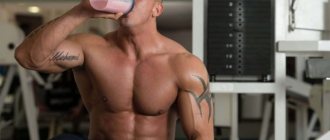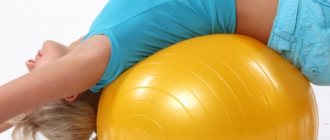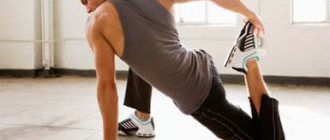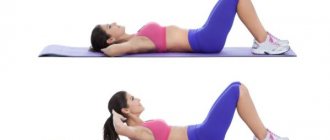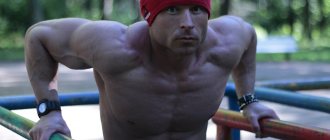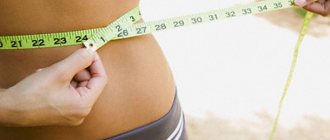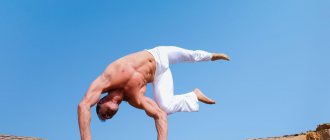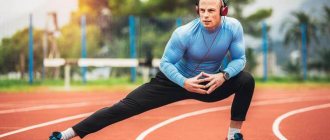Fitness after 50 years is gaining momentum and this will not surprise anyone. Nowadays, all over the world there is often a positive trend towards a significant increase in the active participation of older people in the Fitness movement, and this is due to an increase in overall life expectancy and the natural desire of people for a good quality of life, a healthy lifestyle. Training for any age brings undoubted benefits - this fact has been proven by numerous scientific studies. The benefits of fitness are undeniable.
What are the benefits of fitness after 50 years?
The age group 50+ has its own characteristics and they are related to physiology:
- the strength of the heart muscle and the elasticity of blood vessels decrease;
- blood pressure and heart rate increases;
- the strength of the respiratory muscles and bronchial patency decreases, which leads to shortness of breath during physical exercise. exercises;
- metabolism decreases and muscle loss occurs;
- hormonal changes occur;
- chronic diseases appear;
- therefore, the priority becomes not a slim figure, but health.
Useful Tips - Joint Supplements
Since joint health is critical to movement performance, taking a joint supplement is highly recommended. Over the years, joints wear out under stress, so taking glucosamine, an important component of cartilage, is a wise decision.
Basic principles of training
- gradualness (start with 1-2 times, 2-3 times a week - optimal rhythm, 30-60 min.
- moderation (medium pace: walking, swimming, not running)
- regularity (it’s better to consistently exercise 2-3 times a week than to start with 5-7 times)
As we gradually get older, it is necessary to make timely changes to the training program.
Useful tips - Fish oil
Adequate intake of fatty acids is important for maintaining health, and a calorie-restricted diet may lead to deficiencies. Fats also cushion joints and participate in metabolism, which is extremely important if you lead an active life. Eating healthy fats also means reducing your risk of Alzheimer's and other diseases.
Priorities
The main priorities should be:
- strengthening the back muscles;
- increased physical endurance and strength;
- stretching exercises;
- it is necessary to avoid high loads on the joints and spine;
- Exercises with the head down, as well as circular rotations of the head and torso with weights, are undesirable.
That is, physical health is your goal, and not the aspiration to model parameters. Ladies during menopause should be especially careful when drawing up a training plan.
Before starting classes, a consultation with a fitness doctor is required, and if you have health problems, a certificate from your attending physician is required. Fitness after 50 years must first of all be safe, then it will really bring benefits.
Separately about visiting the sauna. Places increased demands on the cardiovascular system: blood pressure rises, the number of heart contractions increases. Therefore, it is necessary to take into account indications and contraindications, no more than 1. per week, mode 2-3 visits for 3-7 minutes. The motto here is “moderation and moderation again.”
Useful tips - Protein and amino acids
For people who don't do strength training, the process of losing muscle mass begins in their young years along with a drop in testosterone levels. The gym will help stop this process or even reverse it. In this case, protein (amino acids) will be the building material for muscle fibers. It can be very difficult to consume the required amount of protein from regular food. Protein and amino acids help out in this situation.
Crunches
This is a classic abdominal strengthening exercise. Be sure to perform it without lifting your lower back from the floor. Otherwise, not only does the load greatly increase, but the risk of injuring your back also increases significantly.
Lying on your back, bend your knees and place your feet on a wall or rest your heels on the seat of a chair. Hands under the neck. As you exhale, lower your chin to your chest and stretch your forehead forward, twisting your back so that your shoulders and possibly your shoulder blades lift off the floor. In this case, the lower back should press harder to the floor. As you inhale, return to the starting position.
Perform 15 times, rest and repeat 15 more times.
Types of training
If you're interested in fitness after 50 and decide to add a little exercise, here are 5 additional enjoyable, high-impact, but easy types of workouts:
- Swimming and Water Aerobics Even at a moderate pace, 45 minutes of swimming burns more than 300 calories. Adding resistance exercises to water aerobics further activates the muscles without straining the joints.
- Yoga Yoga can be very challenging, especially if you haven't done it before. Start slowly and gradually lengthen your muscles. An hour of yoga for beginners burns approximately 100 calories.
- Walking You can burn about 200 calories (depending on your pace) in 45 minutes. Find a partner to walk with, maybe get a dog and enjoy the scenery!
- Pilates This exercise is great for posture and flexibility. An hour of Pilates for beginners burns about 120 calories.
- Aerobics : Zumba, stair stepper, elliptical, rowing, cycling, etc. Depending on the type of aerobics, choose the appropriate exercise category for you. 45 minutes of Zumba can burn up to 350 calories.
It is important to find a balance between what problems you have, what keeps you in shape and what you like.
Useful tips - Vitamins
Vitamins are recommended for almost everyone, and people over 50 are no exception. Because older people consume fewer calories than younger athletes, they may not be getting enough nutrients from their daily diet. A good multivitamin will fill this gap, boosting your immune system and overall health.
DAY 2: LEGS AND BUTT TRAINING
A set of lower body exercises will help you keep your legs slim and your buttocks toned at the age of 50+. An additional bonus of the workout is the activation of blood circulation in the pelvic organs, which has a positive effect on women’s health.
We recommend watching:
- Top 10 Inner Thigh Exercises Without Squats
- Top 10 exercises for the outer thigh (breeches) without squats
KNEE BACKWARD STANDING
Stand with your right side to the chair, place your right hand on its back to make it easier to maintain balance. Bend your left leg at the knee and take it back, straining your buttocks, but without tilting your body forward. Don't forget to repeat the exercise on the other leg. A simple exercise from a weight loss workout for women 50+ will help you strengthen the muscles of the buttocks and back of the thighs, and will also be an excellent prevention of problems with the hip joint due to the activation of blood circulation in the pelvic area.
How much to perform: 10-12 repetitions on each leg.
STANDING KNEE FLEXION
In the same position, leaning on the back with your right hand, take your left leg back, raising it 45 degrees. Bend your knee completely so that your foot is level with your buttocks, and then straighten your knee. Complete all repetitions on the left leg, and then on the right. The exercise loads the buttocks and back of the thigh, removes cellulite, and also strengthens bones and ligaments, preventing joint problems, in particular osteoporosis.
How much to perform: 12-15 repetitions on each leg.
SWING TO THE SIDE WITH KNEE LIFT
Leaning your right hand on the back of the chair, move your left leg to the side, lifting it as high as possible. Then return your leg to the starting position and bend your knee, lifting it towards your chest. Repeat all over again, and then perform knee lift swings on the other leg. This complex exercise works the back and front of the thighs, eliminates riding breeches, strengthens the buttocks, and also improves blood circulation in the pelvic area.
How much to perform: 10-12 repetitions on each leg.
SWINGS DIAGONALLY
We continue the exercises with support on a chair. Leaning on the back with your right hand, lift your left leg and move it diagonally to the right. From this position, perform swings with a small amplitude, keeping your legs suspended. Don't forget to repeat the exercise for your left leg. Diagonal swings are included in weight loss training for women 50+, as they work the inner thighs and also improve the flexibility of the hip joints.
How much to perform: 15-17 repetitions on each leg.
SWING ON ALL FOURS
Get on all fours, without arching your back, but not rounding it either. To do this, direct your gaze forward without lowering or throwing back your head. Raise your left leg up until it is parallel to the floor without straightening it at the knee. After all repetitions, perform swings for the right leg. An isolated exercise for the buttocks will help you strengthen your muscles and also improve blood supply to the pelvic organs. You can place a towel under the supporting knee to avoid strain on the knee.
How much to perform: 10-12 repetitions on each leg.
FIRE HYDRANT
Standing on all fours (place a towel under your knee if necessary), lift your right leg to the side without straightening it at the knee. Lift until your thighs are parallel to the floor, engaging your adductors and glutes. A simple exercise for women after 50 years at home tightens their legs, including the problematic inner side, and also accelerates metabolic processes in the pelvic organs, helping to preserve women's health.
How much to perform: 10-12 repetitions on each leg.
SWING ON SIDE
Lie on your right side, resting on your palm; you can place your left hand in front of you. Lift your left leg up 45 degrees, tightening your thigh muscles, and then lower it to the starting point. Don't forget to repeat for the right leg. Swings are simple and useful physical exercises for losing weight after 55 years, as they do not load the joints, gently affecting the muscles and ligaments.
How much to perform: 10-12 repetitions on each leg.
SWINGS WITH LEGS HOLDING ON WEIGHT
Continuing to lie on your right side, lift your left leg 30 degrees from the floor and stay in this position. Now lift your left leg off the floor and swing it with a small amplitude, loading the inner thigh. Repeat the exercises on the other side. Swings are not only useful for working the thigh muscles, but also help strengthen the hip joints, maintaining their flexibility for a long time.
How much to perform: 10-12 repetitions on each leg.
SHELL
In the same position, lying on your right side, bend both legs at the knees and bring your feet together. Now lift your left knee up without separating your feet. Raise your knee up with full range of motion, squeezing your thigh muscles. Repeat for the right leg. Pilates exercise strengthens the inner thighs and also opens the hip joints, promoting their flexibility.
How much to perform: 12-15 repetitions on each leg.
HIP ROTATION
Lying on your right side, bend your right leg at the knee and lift your left leg up 45 degrees from the floor. Now rotate the hip joint, moving in a circle: forward-up-back. After all repetitions, perform the exercise on the other side. Another exercise that strengthens and opens the hip joints, improving their flexibility and mobility. In addition, intensive work is being done on the slimness of the legs.
How much to perform: 10-12 forward rotations and 10-12 backward rotations on each leg.
Advanced practitioners can repeat the workout in 2-3 circles.
General recommendations
- A doctor's certificate is required, initial testing by a fitness doctor.
- Train 2-3 times a week, no more than 1 training session per visit.
- Avoid high intensity workouts. Morning hours are preferred.
- Do not combine several workouts in one day.
- The uniform for classes should be comfortable.
- Be sure to drink water during your workout.
For some, 50 years is the peak of their career and personal life; for others, it is the stage of struggle for health. Everything is individual. Listen to yourself. If you overcome physical stress during fitness classes as before, continue at the same speed. If you feel discomfort, contact your doctor for advice.
Workouts in the gym
A weight loss program on exercise machines for women should be drawn up only by a sports instructor and only after a doctor’s opinion. Contraindications for classes are:
- acute viral and colds;
- oncological diseases;
- postoperative period;
- injuries;
- frequent dizziness.
If you have hypertension, you should carefully consider the type of training you choose. Callanetics, yoga and Pilates are acceptable in this case.
If the woman has experience training in the gym, isolation exercises and walking on a treadmill should be included. Muscle isolation exercises do not actively involve the joints. You should not perform exercises with heavy weights; it is better to replace them with high-repetition training. The best option is to attend group classes.
